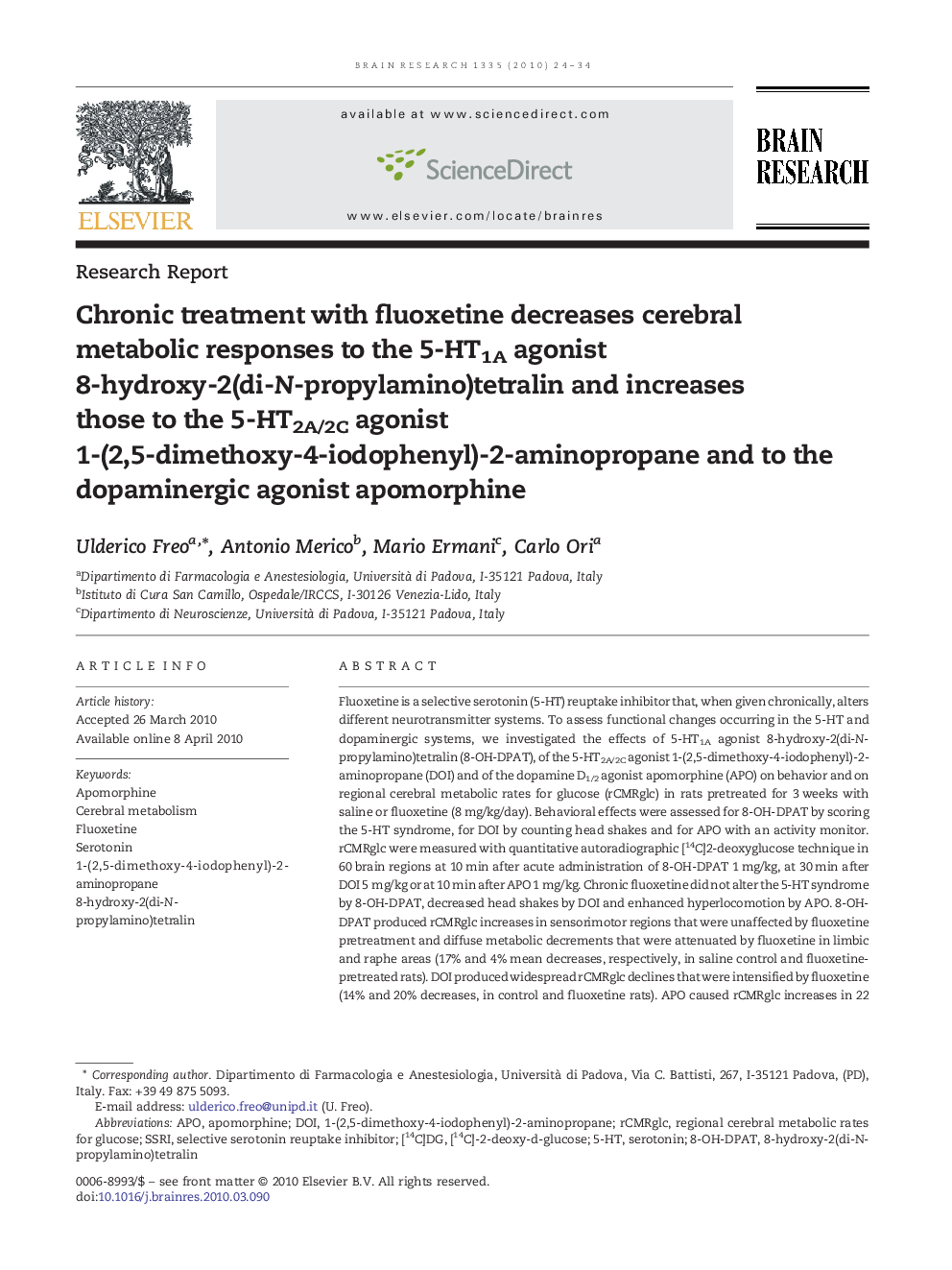| Article ID | Journal | Published Year | Pages | File Type |
|---|---|---|---|---|
| 4326999 | Brain Research | 2010 | 11 Pages |
Fluoxetine is a selective serotonin (5-HT) reuptake inhibitor that, when given chronically, alters different neurotransmitter systems. To assess functional changes occurring in the 5-HT and dopaminergic systems, we investigated the effects of 5-HT1A agonist 8-hydroxy-2(di-N-propylamino)tetralin (8-OH-DPAT), of the 5-HT2A/2C agonist 1-(2,5-dimethoxy-4-iodophenyl)-2-aminopropane (DOI) and of the dopamine D1/2 agonist apomorphine (APO) on behavior and on regional cerebral metabolic rates for glucose (rCMRglc) in rats pretreated for 3 weeks with saline or fluoxetine (8 mg/kg/day). Behavioral effects were assessed for 8-OH-DPAT by scoring the 5-HT syndrome, for DOI by counting head shakes and for APO with an activity monitor. rCMRglc were measured with quantitative autoradiographic [14C]2-deoxyglucose technique in 60 brain regions at 10 min after acute administration of 8-OH-DPAT 1 mg/kg, at 30 min after DOI 5 mg/kg or at 10 min after APO 1 mg/kg. Chronic fluoxetine did not alter the 5-HT syndrome by 8-OH-DPAT, decreased head shakes by DOI and enhanced hyperlocomotion by APO. 8-OH-DPAT produced rCMRglc increases in sensorimotor regions that were unaffected by fluoxetine pretreatment and diffuse metabolic decrements that were attenuated by fluoxetine in limbic and raphe areas (17% and 4% mean decreases, respectively, in saline control and fluoxetine-pretreated rats). DOI produced widespread rCMRglc declines that were intensified by fluoxetine (14% and 20% decreases, in control and fluoxetine rats). APO caused rCMRglc increases in 22 brain regions that were potentiated by fluoxetine in dopaminergic motor areas (10% and 25% increases, in control and fluoxetine rats). In conclusion, fluoxetine enhances 5-HT neurotransmission by blunting responsivity of 5-HT1A autoreceptors and increasing that of 5-HT2A/2C postsynaptic receptors and enhances dopaminergic D1/2 receptor neurotransmission.
